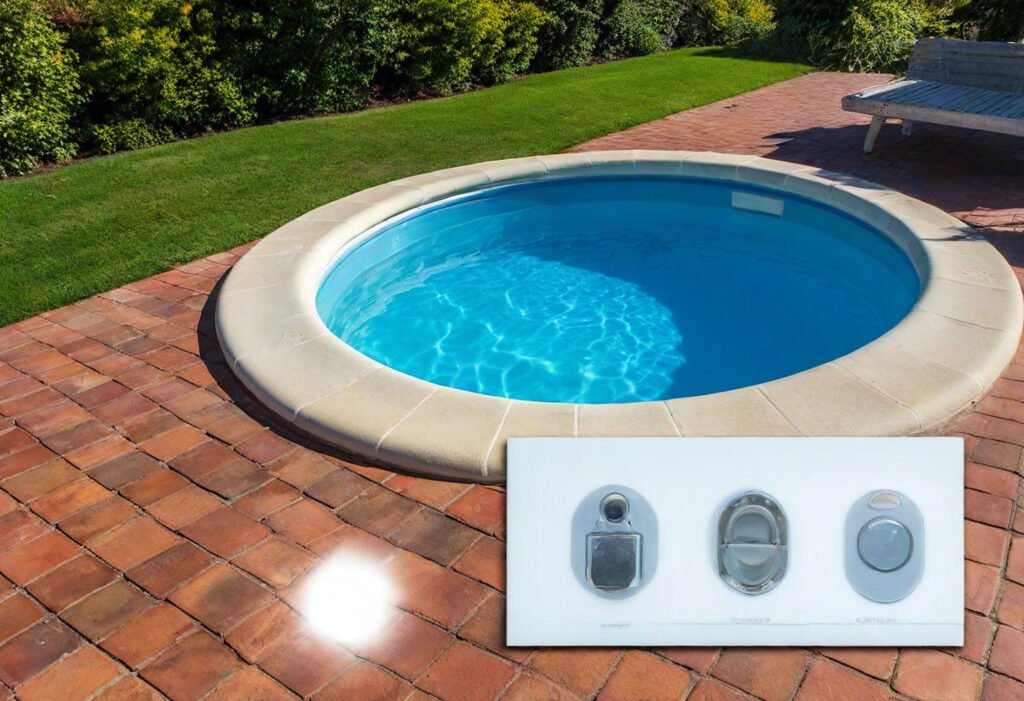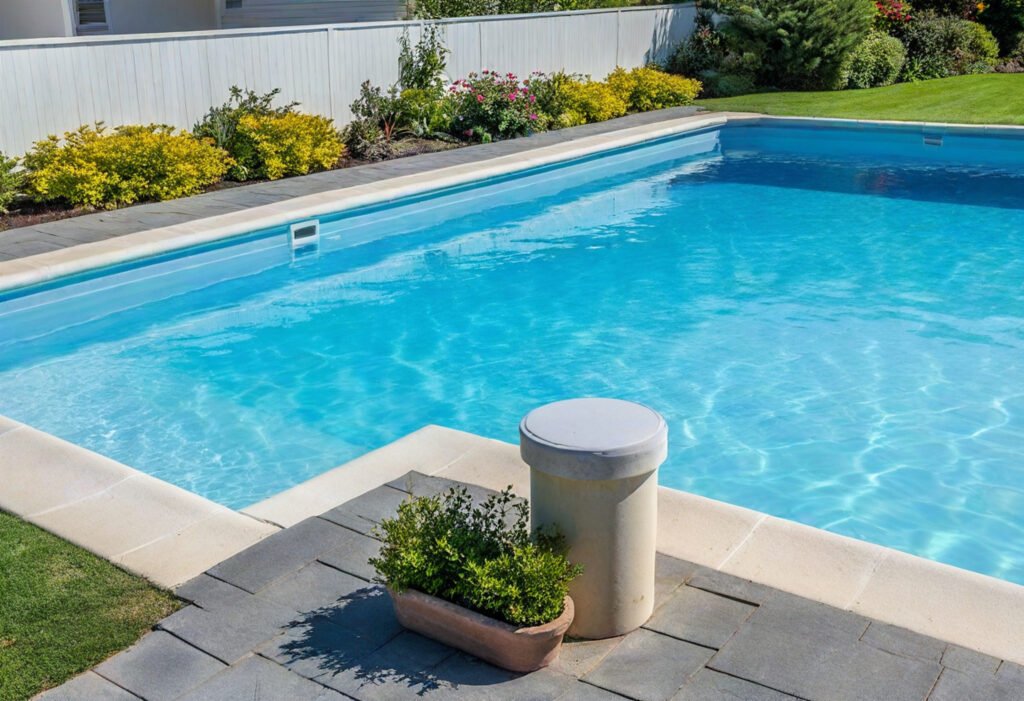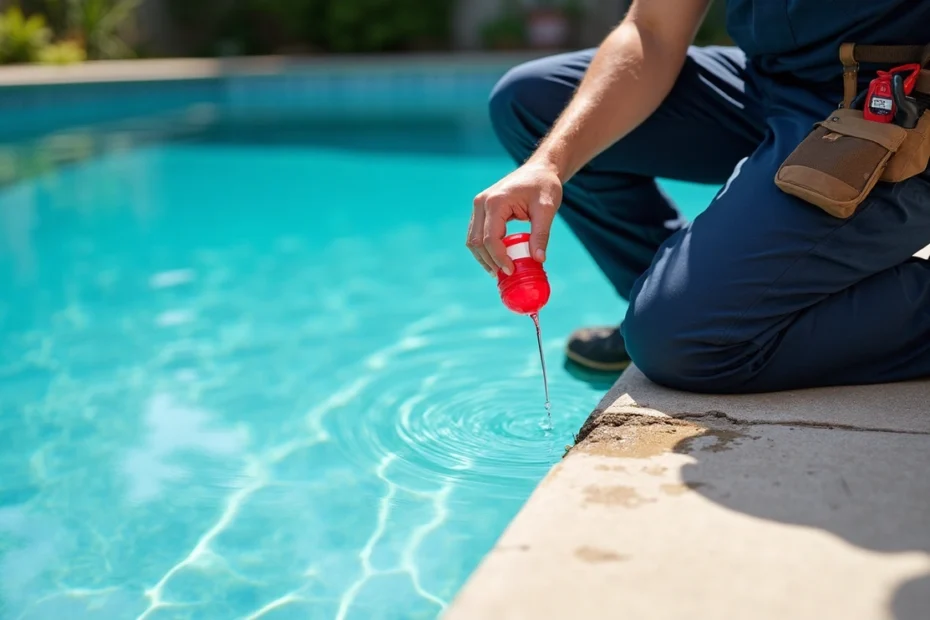Your swimming pool might have a serious leak if water levels drop more than a quarter inch each day. Research shows that 8% of American households own private pools, and leak problems are more common than you might think.
Pool equipment suffers and chemical balance gets disrupted when leaks go unnoticed. This not only makes swimming less enjoyable but also leads to costly repairs later. Most pool owners spend between $250 and $1,500 on repairs, which makes early leak detection significant. The problem could be anything from broken pipes needing quick fixes to mysterious water loss that requires investigation. We have practical and tested solutions ready to help you tackle these issues.
Understanding the Main Types of Pool Leaks
Recent studies show that 1 in 20 pools across the United States lose water through hidden leaks. Pool owners need to know the exact type of leak before starting any repairs. Here’s a breakdown of four major pool leak categories and what makes each one unique.
Suction side leaks: what they are and how they happen
Your pool’s suction side leaks happen in the plumbing before water gets to the pool’s impeller. These leaks show up when the pump isn’t running, and you’ll see air getting pulled into the pipes once the pump starts. Several things can cause these leaks – old pipes, poor installation, freeze-thaw cycles, pressure changes, and chemical imbalance.
The signs of a suction leak include:
- Air bubbles showing up in the pump basket (if you have a clear lid)
- Air bubbling from the return lines
- Air that keeps collecting in the filter tank
Pressure side leaks: common causes and signs
The pressure side of your pool can develop leaks after water moves through the impeller. These leaks become worse when the pump runs, turning small drips into powerful sprays. You’ll usually find these leaks where glue joints have cracked, pipe fittings are damaged, or PVC connections have worn out.
Water loss that only happens when your equipment runs points to a pressure side leak. You should also look at your waste or backwash line – water shouldn’t be running there constantly.
Underground leaks: how to detect them
Weather changes, age, and pipe damage lead to underground plumbing leaks. These leaks might be rare, but finding them can be tricky. Watch out for:
- Soft, mushy areas in your yard
- Grass that grows unevenly around the pool
- Sinking or shifting landscaping from erosion
Many pool owners worry about major excavation work, but most repairs don’t need a backhoe.
Structural leaks: cracks in the pool shell or liner
The pool vessel itself can develop structural leaks through cracks in concrete or tears in vinyl liners. These problems typically come from:
- Construction or engineering flaws
- Soil movement that shifts the ground
- Groundwater pressure
- Repeated freezing and thawing
Vinyl liners typically last 8-20 years, though weather and pool shape can change this timeline. Small surface cracks in concrete pools usually don’t leak, but deeper cracks need immediate attention.
Finding the right type of leak makes a big difference in fixing your pool the right way.
How to Fix a Pool Leak Based on Its Type
The right repair technique will give you lasting results after you identify your pool’s leak type. Let’s look at solutions that work best for each kind of swimming pool leak.
Temporary vs permanent fixes for suction side leaks
Small suction side leaks can be fixed with underwater patch kits or waterproof sealants. These quick solutions work well for minor issues and you won’t need to drain your pool. Replacing damaged O-rings or gaskets usually fixes air leaks in the pump strainer lid. All the same, pipes with major damage need a section cut out and new PVC pipe installed with proper primer and glue to create a lasting repair.
Why pressure side leaks require full replacement
Pressure side leaks just need complete replacement instead of patching. Temporary fixes rarely hold because these leaks happen under pressure. You can first try replacing the O-ring with silicone lubricant for union connections. But cracked fittings or damaged pipe sections must be cut out and replaced with new PVC components. A full replacement will give you reliable pressurized lines and stop future failures.
Repairing underground leaks with or without digging
Advanced technology now lets us fix underground leaks without much digging. Trenchless pipe repair technologies like epoxy liners can seal leaks from inside the pipe. PipeFuze systems use a two-part coagulant to repair leaks in pipes that lose less than 5 pounds of pressure over 30 seconds. Sometimes digging becomes unavoidable, but targeted excavation works better than complete trenching—usually a 3’x3′ hole is enough to reach the damaged section.
Fixing structural cracks with patches or resurfacing
The repair method for structural cracks depends on how bad they are. Pool putty, hydraulic cement, or epoxy injections can fix small cracks. The best way is to widen the crack with a grinder to create a reverse ‘V’ shape, clean it well, and apply a bonding additive before filling it with plaster mix. Complete pool resurfacing gives you a detailed solution for extensive or multiple cracks, especially in older pools with wearing surfaces.
Tools and Materials You’ll Need for Swimming Pool Pipe Leak Repair

Swimming pool pipe leak repairs need the right tools and materials. You can fix many common leaks yourself with proper equipment instead of calling a professional.
PVC primer and glue
Pool repairs need both PVC primer (purple or clear) and PVC cement made specifically for swimming pools. The primer cleans and softens the pipe surface to create a chemical bond with the glue. The cement must go on within 10 seconds after the primer while the surface stays tacky. Pool-grade PVC cement is different from standard plumbing adhesives because it can handle pool chemicals and constant water exposure.
Couplings, elbows, and replacement fittings
Keep a good supply of PVC fittings that match your pool’s plumbing size (usually 1.5″ or 2″). You’ll need these basic items:
- Straight couplings to join pipe sections
- 45° and 90° elbows to change directions
- Unions to create easy-to-service connections
- Reducing couplings if your system uses different pipe sizes
Buy extra common fittings so you won’t need store runs during repairs. Schedule 40 PVC works well for most home pools, while commercial pools typically use Schedule 80 for extra strength.
Leak detection dye and pressure testing tools
Red food coloring or special dye tablets in a leak detection kit help you spot structural leaks by showing water movement. A pressure gauge that connects to your system helps check pressure-side issues. A bucket test kit (or marked bucket) helps measure water loss to confirm if you’re dealing with evaporation or an actual leak.
When to use pool putty or silicone sealant
Pool putty works great for underwater emergency repairs on small structural cracks or sealing around fittings. It cures underwater and gives you quick temporary fixes. Silicone sealant needs dry surfaces and creates a flexible waterproof seal around lights, skimmers, and returns. Epoxy injection systems fix larger structural cracks better, but they need complete surface prep and dry conditions to stick properly.
When to Call a Pro and What It Might Cost

DIY pool repairs don’t always cut it. You need to know the right time to call a professional. This decision can save you money, and time, and protect your property from further damage.
Signs the leak is too complex for DIY
You’ll need professional help if you face:
- Underground plumbing issues below the pool’s surface
- Large structural cracks that need major repairs
- Multiple leaks or problems that keep coming back after repairs
- Specialized equipment that stops working
- Water loss that’s more than half an inch each day
The ground around your pool should be dry. Wet spots that don’t dry up or sudden structural problems point to serious underground leaks.
Typical pool leak repair cost ranges
Professional pool leak repairs usually cost between $475-$525. The price depends on how complex the leak is. Here’s what you might pay:
- Small plaster cracks: $65
- Vinyl liner tears: $100-$500
- Small fiberglass shell cracks: $300
- Pump system leaks: $200-$500
- Leak detection service: $300-$400
Pool leaks can get pricey if you ignore them. Homeowners spend about $1,200 every year on wasted water, chemicals, and higher energy bills.
How swimming pool leak detection and repair services work
Pool professionals use advanced tech to find leaks accurately. Here’s their process:
The team starts by isolating your pool’s plumbing from your home’s system. They use special electronic listening devices that can detect leak sounds. They also do underwater checks with red dye tests near possible cracks without draining the pool.
Pressure testing helps find underground leaks by pushing water or air through individual pipes. The repair might need epoxy for small cracks or special injection foam for lasting fixes.
Benefits of pipe relining for underground leaks
Pipe relining is a modern fix for underground leaks that doesn’t need much digging. This method beats traditional approaches that tear up your yard. Here’s why it works:
Your yard and pool deck stay intact. Most jobs wrap up in a day, so you can jump back in the pool quickly. The epoxy liner creates a smooth new pipe inside the old one that stands up to corrosion and tree roots.
A crack as small as a pencil tip wastes 400 gallons daily. Quick professional help with advanced methods like pipe relining is often your best bet for long-term savings.
Conclusion
Swimming pool leaks can be scary at first. Understanding different types of leaks and how to fix them makes repairs much easier. You might see air bubbles from suction side leaks, or pressure side leaks that need complete replacement. Underground leaks need special detection tools, while structural cracks can affect your pool’s shell. Quick action is key to preventing bigger problems.
You can fix minor issues yourself with basic tools and materials. PVC primer and glue, the right fittings, and leak-detection dyes usually fix common problems. Complex issues like multiple leaks or big water losses mean you should call experts. Professional repairs cost between $475 and $525 on average.
Small leaks waste up to 400 gallons of water daily. This adds up to $1,200 yearly in wasted water, chemicals, and energy. Modern fixes like pipe relining are a great way to fix underground leaks without tearing up your yard.
Early detection and quick action make the difference between a small fix and a huge repair bill. Check for leaks regularly, especially when water loss is more than a quarter inch per day. Your pool is a big investment. Good maintenance and timely repairs will keep it running smoothly for years to come.
